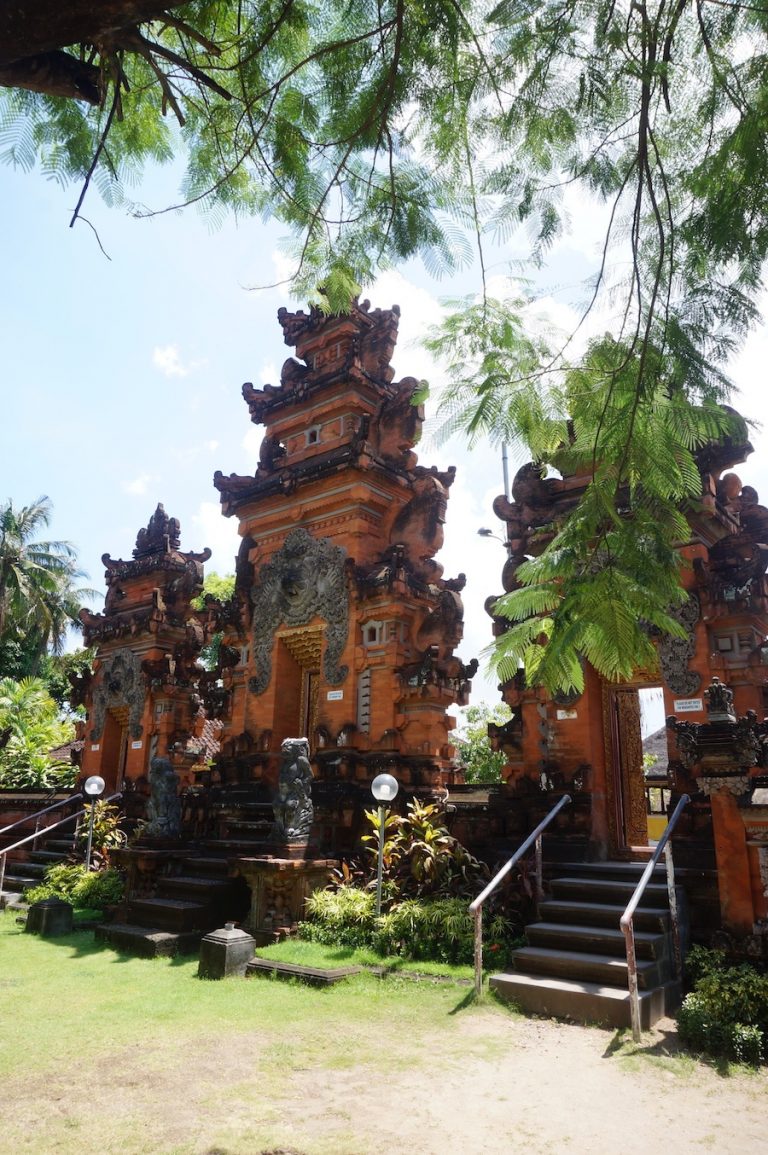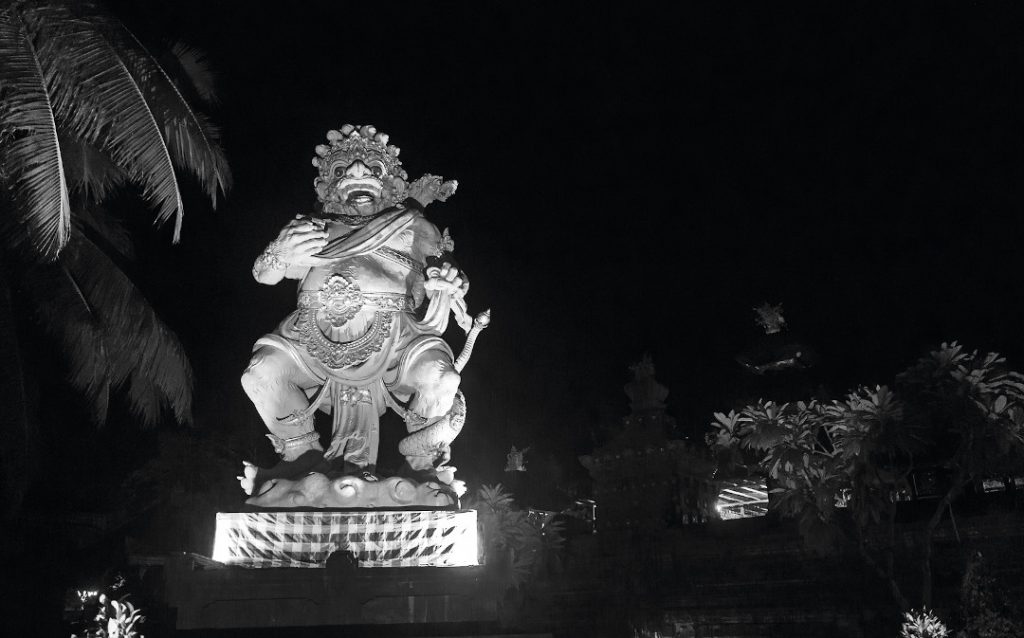The name ‘Petitenget’ has now become synonymous with the glitz and glamour of the Seminyak lifestyle; with some of Bali’s best hotels, restaurants, beach clubs and bars lining both sides of Petitenget Road. Though popular today for its late-night haunts, before the bright lights and upbeat music the area was once known as being haunted.
Built by the Hindu priest, Dang Hyang Nirartha – also responsible for building the revered Pura Luhur Uluwatu and Pura Tanah Lot temples – Pura Petitenget temple is found on the popular Seminyak beachfront.

Legend has it that one day the great priest was resting amidst the bushes of Petitenget (not yet called this) and fell asleep. Only minutes after he had closed his eyes, Nirartha was awakened by the presence of a creature in the shape of a human but with a monstrous face. It took only a heartbeat for Nirartha to realise that it was an evil force that had disturbed his slumber.
The monster is known as Buto Ijo, and quite like Nirartha’s quick analysis of the fearsome creature, the former instantly recognised that the priest himself possessed great spiritual power too. Quickly, Buto Ijo attempted to flee the scene, knowing that the great Nirartha’s power could easily overcome his own. Yet, it was too late, he was ensnared in the might of the priest’s magic. Thus, an interrogation followed and under the holy man’s spells, Buto Ijo could only answer truthfully.

“Why are you here? Why do you scour and stalk these lands, evil spirit?” Questioned the priest.
Buto Ijo admitted that he had spent years haunting the villagers of the area, as well as the villagers nearby. He had plagued them, stolen from them and even gone as far as killing a few of them.
Hearing this, Nirartha knew the spirit deserved severe punishment. He made the creature pay for what he had done, but after he taught Ijo the real spiritual values, transforming the monster from an evil entity into the guardian of the very villages he used to haunt.
Then, Nirartha continued to exorcise the whole area, capturing other evil spirits who called this place home. He imprisoned them all in two wooden chests, to which he gave to the newly reformed Buto Ijo to guard.
It is these ghost-filled chests from which Petitenget gets its name. Peti means chest, whilst ‘tenget’ means charged or endowed with magic. These magically charged chests are thus the prisons of the evil spirits, guarded by Buto Ijo himself.

Today, Pura Petitenget still remains an important highlight as one of the very few cultural landmarks in upscale Seminyak. The temple also forms one of the Bali’s Kahyangan collection of sea temples built by Dang Hyang Nirartha to spiritually guard the island’s perimeters.
During temple anniversary, which falls on a ‘Merakih’ Wednesday every 210 days on the Balinese Pawukon calendar, Pura Petitenget is made merry by the colourful banners and parasols, as well as the pilgrims wearing their colourful, traditional Sunday best for a praying session. And prior to the big temple anniversary ceremony, traditional dance rehearsals by the local Balinese Hindus normally take place at the grand pavilion nearby. And when it happens, the festivity makes a great introduction to the real Bali for visitors to the modern Seminyak.







